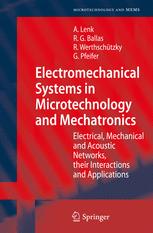

Most ebook files are in PDF format, so you can easily read them using various software such as Foxit Reader or directly on the Google Chrome browser.
Some ebook files are released by publishers in other formats such as .awz, .mobi, .epub, .fb2, etc. You may need to install specific software to read these formats on mobile/PC, such as Calibre.
Please read the tutorial at this link: https://ebookbell.com/faq
We offer FREE conversion to the popular formats you request; however, this may take some time. Therefore, right after payment, please email us, and we will try to provide the service as quickly as possible.
For some exceptional file formats or broken links (if any), please refrain from opening any disputes. Instead, email us first, and we will try to assist within a maximum of 6 hours.
EbookBell Team

4.1
90 reviewsElectromechanical systems consisting of electrical, mechanical and acoustic subsystems are of special importance in various technical fields, e.g. precision device engineering, sensor and actuator technology, electroacoustics and medical engineering. Based on a circuit-oriented representation, providing readers with a descriptive engineering design method for these systems is the goal of this textbook. It offers an easy and fast introduction to mechanical, acoustic, fluid, thermal and hydraulic problems through the application of circuit-oriented basic knowledge. The network description methodology, presented in detail, is extended to finite network elements and combined with the finite element method (FEM): the combination of the advantages of both description methods results in novel approaches, especially in the higher frequency range. The book offers numerous current examples of both the design of sensors and actuators and that of direct coupled sensor-actuator systems. The appendix provides more extensive fundamentals for signal description, as well as a compilation of important material characteristics. The textbook is suitable both for graduate students and for engineers working in the fields of electrical engineering, information technology, mechatronics, microtechnology, and mechanical and medical engineering.